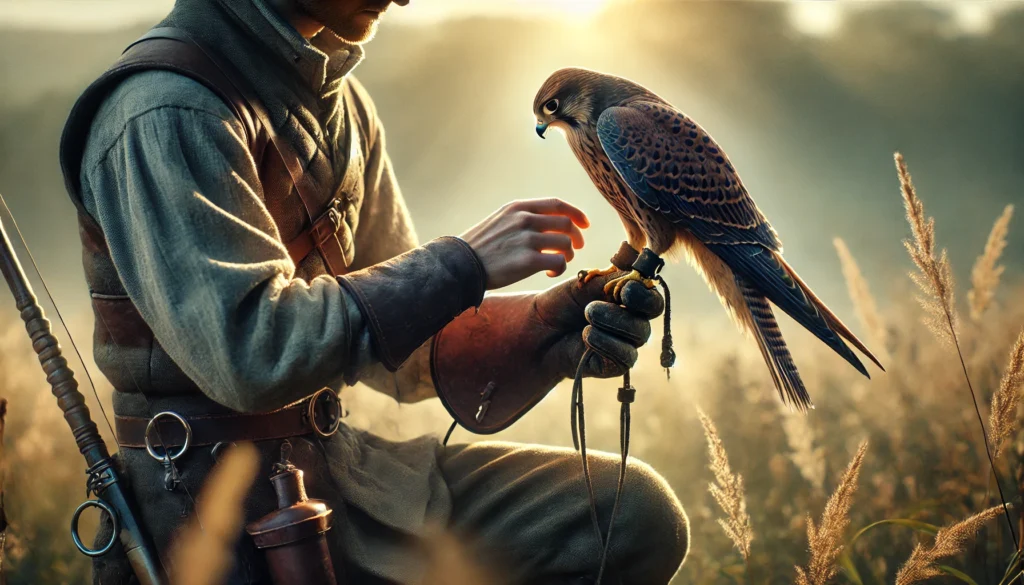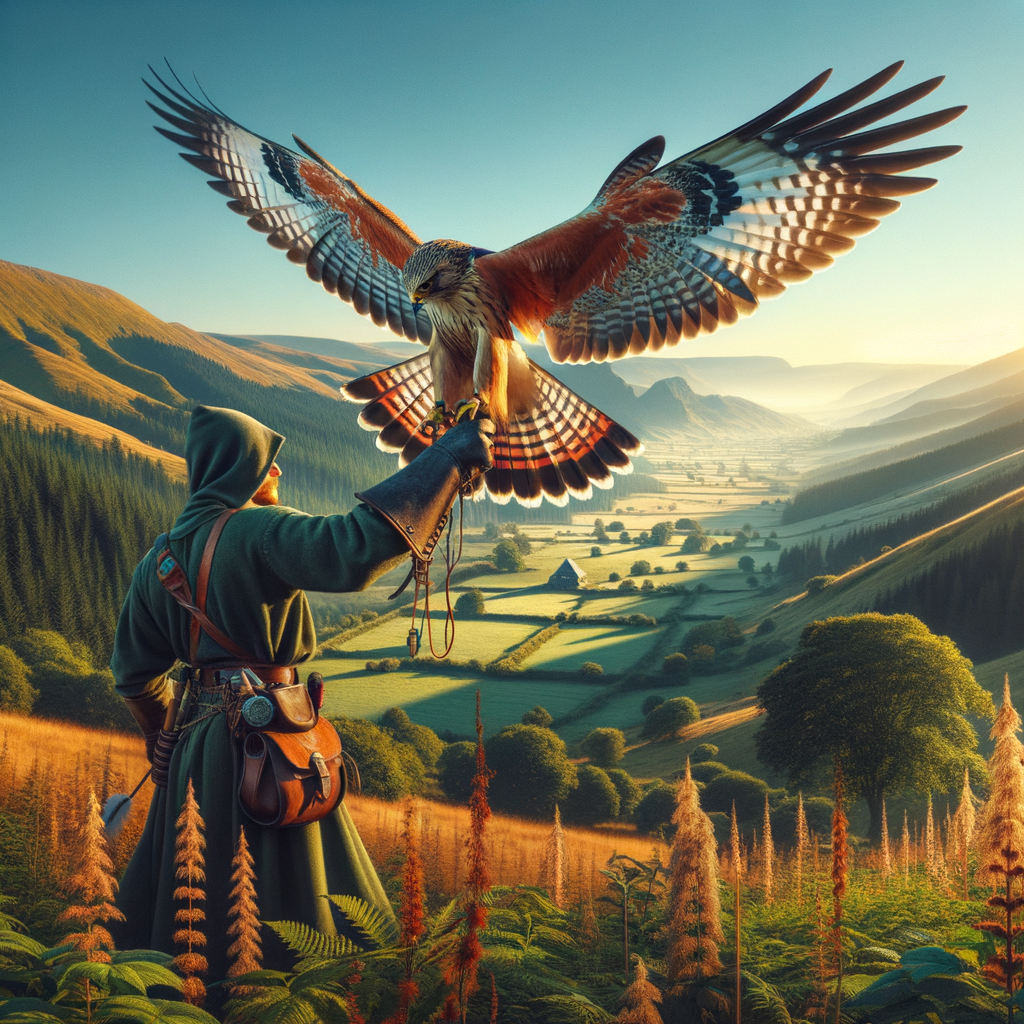Exploring Modern Falconry
- Falconry is an ancient practice where trained birds of prey hunt wild game.
- Modern falconry blends tradition with new technologies.
- Training a bird of prey involves patience and knowledge.
- Equipment used in falconry includes hoods, jesses, and telemetry.
- Sustainable hunting practices are vital to protect wildlife.
- Falconers must understand the behavior and needs of their birds.
- Falconry is both a sport and an art form connecting people with nature.
- It’s important for falconers to follow legal regulations and ethical guidelines.
Discovering the Magic of Modern Falconry
Imagine you’re wandering through the lush, emerald fields of Ireland, where ancient castles stand tall and myths whisper through the winds. Among these tales, picture the noble falcons, soaring gracefully, once cherished as hunters by the Irish royalty. Now, these majestic birds have a new story to tell’one that blends old traditions with the wonders of today.
Welcome to Learn Falconry, where we’re passionate about sharing the timeless art of falconry with the world. Modern falconry isn’t just about hunting; it’s about understanding these incredible birds, forging a unique bond with nature, and experiencing the thrill of training and flying falcons in a way that’s as rewarding as it is exhilarating.
In this article, we’ll explore how modern falconry has evolved, why it’s more relevant than ever, and what makes it such a fascinating practice. Stick with us, and you’ll uncover the surprising connections between ancient falconry and its modern twists, much like discovering a hidden gem in the Irish countryside. So, ready to embark on this sky-high adventure? Read on, and let’s soar together!
Modern Falconry: Embracing Contemporary Techniques
Falconry, the ancient practice of training birds of prey to hunt in cooperation with humans, has evolved significantly over centuries. Today, we explore the world of contemporary falconry ‘ a blend of traditional methods and cutting-edge technology.
Contemporary Falconry Unveiled
Contemporary falconry isn’t just about keeping age-old traditions alive but enhancing them with modern advancements. Enthusiasts now use new falconry techniques to ensure the health and efficiency of their birds.
For example, advancements in falconry equipment and training methods have revolutionized how falconers interact with and train their birds. Check out our extensive guide on different types of falconry equipment for more insights.
Modern Falconry Methods
Falconers today employ a combination of traditional and modern falconry methods. These include using state-of-the-art gps trackers to monitor the location of their birds and telemetry devices to ensure safety during flights.
Advanced training methods such as positive reinforcement techniques and clicker training make the learning process both effective and humane. Learn more about these innovative methods in our section on modern falconry techniques.
The Role of Technology in New Falconry
In new falconry, technology plays a crucial role. From digital record keeping to virtual falconry training, technology has integrated seamlessly into the practice, making it more accessible and manageable.
For instance, the use of falconry apps and software provides falconers with real-time data and analysis, thereby improving training routines and overall bird care. Detailed information on the use of technology can be found in our dedicated section on falconry technology.
Ethical Practices and Sustainable Falconry
Another significant aspect of modern falconry is its emphasis on ethical practices and sustainability. Modern falconers adhere to strict guidelines to ensure the welfare of their birds and conservation of wildlife.
By following ethical training practices and participating in conservation efforts, falconers contribute to a sustainable future for these majestic birds and their habitats. Explore more about ethical falconry here and the role of falconry in conservation here.
Diving Deeper into Species and Techniques
For those interested in the diversity of birds used in falconry, our detailed guides cover a range of falcon species. Understanding the different characteristics and needs of each species is crucial for effective training and care.
Moreover, falconers can learn various techniques employed in different environments and purpose, ensuring a well-rounded and comprehensive practice.
Advanced Falconry for Experts
Experienced falconers often delve into advanced falconry techniques, such as specialized equipment use and high-performance bird training. These advanced methods ensure the preservation and enhancement of their skills.
Check out our advanced guide on specialized equipment and other expert-level practices here.
By embracing contemporary falconry, combining new falconry methods with traditional techniques, and ensuring ethical practices, modern falconry continues to flourish, offering an amazing and sustainable experience for both the falcons and their handlers.
Conservation Efforts
Efforts to Protect Raptor Populations and Habitats
Falconers play a crucial role in conserving raptor species and protecting their natural habitats. By working with organizations like The Peregrine Fund, McGill University, and the University of Saskatoon, falconers have significantly contributed to the recovery of the wild peregrine falcon populations in North America.
Consider this real-world impact:
- Peregrine Falcon Recovery: The North American peregrine falcon population has rebounded from near extinction, largely due to collaborative efforts in conservation and bans on harmful substances like DDT.
Habitat Protection Initiatives
Falconers are also involved in maintaining and restoring habitats that are essential for the survival of raptor populations. One notable project is the protection of sage grouse habitats in the western United States, which is vital for several raptor species.
Here is a summary table of key conservation initiatives:
| Project Name | Partnership | Achievements |
|---|---|---|
| Peregrine Falcon Recovery | The Peregrine Fund, McGill University | Increased peregrine falcon populations in North America |
| Sage Grouse Habitat Protection | Various local agencies | Conserved critical habitats for multiple raptor species |
Research and Technology
Advanced Research Projects
Modern falconry integrates cutting-edge research to enhance the understanding and preservation of raptor species. One such initiative is “Project Goshawk,” which aims to study the behavior and habitats of goshawks to ensure their protection and longevity.
Technological Integration in Falconry
In 2024, the use of technology like 3D printing is revolutionizing falconry. Falconers use 3D printers to create custom equipment such as GPS telemetry and accessories, significantly improving the monitoring and training of birds.
Check the advancements:
- GPS Tracking: Allows falconers to closely monitor the movements and health of their birds, ensuring safety and improved training outcomes.
- 3D Printing: Custom equipment designed for specific needs, enhancing the efficiency and effectiveness of falconry practices.
Rehabilitation and Release
Rehabilitating and Releasing Raptors
Rehabilitation centers engage in the recovery and reintroduction of birds into the wild. For instance, rehabilitated golden eagles are released back into their natural habitats with satellite telemetry to track their movements, ensuring their adaptation and safety post-release.
Licensing and Regulations
Falconry License Applications
In California, aspiring falconers must pass a stringent examination process to obtain a falconry license:
- Exam Requirement: Applicants must score at least 80% on the falconry exam.
- Deadline: Applications must be submitted by April 10, 2024, with the exam scheduled for April 12, 2024.
Capture Applications in Oregon
The Oregon Department of Fish and Wildlife (ODFW) has a new application process for capturing resident peregrine falcons. The online application includes specific criteria that applicants must meet, ensuring that falconry practices adhere to ethical and conservation standards.
Licensing and Regulation Overview
| State | Application Detail | Requirement |
|---|---|---|
| California | Falconry license application process, including a significant examination | 80% pass rate on exam |
| Oregon | Online capture application for resident peregrine falcons | Specific criteria |
Community Engagement
Collaboration and Engagement Initiatives
Falconers often collaborate with other outdoor enthusiasts like hunters and anglers to promote wildlife conservation and bolster biological research. These partnerships enhance community involvement and support broader conservation goals.
Falconry Competitions and Festivals
Showcasing Skills and Promoting Conservation
Falconry festivals and competitions are popular platforms where falconers showcase their skills and educate the public about the importance of bird conservation and ecological education. These events not only highlight the cultural heritage of falconry but also foster public awareness and support for raptor conservation efforts.
By combining traditional techniques with modern advancements, falconry in 2024 remains a respected practice that continues to adapt and thrive. Stay tuned to learn more and explore fantastic opportunities with Learn Falconry!
Embracing the Future of Falconry
Modern falconry in 2024 combines ancient traditions with cutting-edge technology to ensure the safety and well-being of both birds and falconers. Here are some of the critical advancements:
Conservation and Protection: Falconers actively support conservation efforts, such as habitat protection and rehabilitation programs, to preserve raptor populations.
Innovative Technology: Technologies like GPS tracking and 3D printing of telemetry gear enhance falconry practices, allowing precise monitoring and better training techniques for the birds.
Community and Education: Falconers engage in community outreach, partnering with various organizations and participating in festivals to promote bird conservation and share knowledge.
Ethical Practices and Research: Falconry clubs worldwide advocate for ethical practices and conduct important research projects to better understand raptor behaviors and habitats.
New Initiatives: Programs like the peregrine falcon banding at universities and updated licensing processes for falconers ensure the ongoing health and monitoring of bird populations.
With these advancements, modern falconry continues to thrive, combining respect for its rich heritage with a forward-thinking approach to conservation and technology. Whether you are an experienced falconer or just curious about this fascinating practice, there’s never been a better time to learn and be part of the falconry community.



